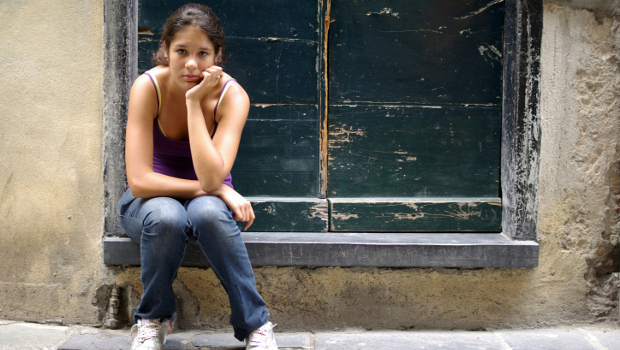Growing up is hard to do—especially when you have a chronic illness

Dr. Paula Lozano’s research aims to ensure that chronically ill kids make a safer and easier transition to adulthood
Twin-sized bedding, a laptop, a desk lamp, and a laundry hamper. These are among the items atop the summertime packing lists of young adults across the country who are headed to college this fall. Many parents will worry that their student’s laundry won’t ever make it from the hamper to the washing machine. But when you’re the parent of someone with a chronic illness like diabetes, asthma, or Crohn’s disease, you have far more serious things to worry about.
Will my son or daughter remember to take their medication regularly? Will they recognize when their symptoms worsen and they need to adjust their usual medications? Will they be aware of possible triggers and avoid them?
When the answer is “no,” the consequences can be stressful, even dire. That’s why Group Health Research Institute Senior Investigator Paula Lozano, MD, MPH, is exploring new ways to help families with chronically ill kids ensure the answer is “yes.”
Parenting at a whole new level
Dr. Lozano’s goal is to help children with chronic illness and their parents build the knowledge and skills they need to ensure a safe and successful transition to adulthood. As a Group Health pediatrician and assistant medical director in the organization’s Department of Preventive Care, she has firsthand knowledge of the challenges families face when raising kids who are chronically ill. With funding from the Lucile Packard Foundation for Children’s Health, she and her GHRI research team are developing a new conceptual model for managing chronic illness as children grow up. Among her team members are GHRI Research Associate Karin Johnson, PhD, and expert advisors from Seattle Children’s Research Institute and the University of Washington Departments of Pediatrics and Family and Child Nursing.
The new model expands upon the self-management component of the Chronic Care Model—a widely used approach to improving chronic illness outcomes developed by GHRI’s MacColl Center for Health Care Innovation in the mid-1990s. Dr. Lozano’s model brings self-management into the pediatric context by incorporating the different roles the parent and child play in the child’s ongoing care.
“Our model addresses important differences in self-management that arise when the person with chronic illness is a child,” Dr. Lozano explains. “As the child grows up, the parent is teaching, coping, modeling, planning—and all of this is happening in the context of the parent-child relationship. They may not be moving in lockstep, and the child may rebel. It takes parenting to a whole new level.”
Learning to hit a moving target
The model also accounts for the changing nature of self-management as chronically ill kids reach different stages of development. For example, the strategies a parent might use to manage their child’s illness—whether it’s sickle cell disease, cystic fibrosis, or rheumatoid arthritis—will be different depending on whether the child is 5, 10, or 15 years old.
“With pediatric self-management, you’re not dealing with a mature individual who has the skills and abilities to manage a chronic condition,” Dr. Lozano says. “At the same time, the child or teen may be ready to take on more responsibilities than the parent or provider realizes. You’re dealing with a moving target.”
To learn how families cope with these transitions, Dr. Lozano’s team led a series of focus groups with parents of chronically ill kids and young adults who grew up with a chronic illness. For some families, the illness was a footnote. For others—especially those with rarer and more serious conditions—it dominated much of the family’s life. A key challenge for nearly everyone was ensuring growing kids learned how to manage their condition day to day—making good choices about what they eat, when to take their medications, and which recreational activities to participate in.
“We learned that, in general, parents aren’t thinking about the transition to adulthood, and their doctors aren’t really talking with them about it,” she says. “Savvy parents and providers intuitively tune into it. But it’s not part of what’s taught in regard to pediatric chronic illness care, and there’s no infrastructure to support it. We hope the new model will help fill this important gap.”
Moving from ‘pandemonium’ to empowerment
One young man in Dr. Lozano’s focus groups shared a story that illustrates what can happen when teens with chronic illness start living on their own—but don’t have the knowledge and skills they need to effectively manage their condition. He ended up in the emergency room a few weeks after leaving home for college for the first time.
“He’d started having symptoms and realized he was a few hundred miles from home and didn’t know what to do,” says Dr. Lozano. “He was scared and didn’t have the skills—or confidence—to troubleshoot the situation on his own. He got on the phone with his parents and they had to make it up as they went along. He described it as ‘pandemonium.’ It took a couple of stressful days and a trip to the ER to sort things out. He wondered why his family and his provider hadn’t thought ahead and helped him plan for this.’’
Dr. Lozano’s long-term goal is to use the model to put new tools in the hands of families and providers who are managing childhood chronic illness. She expects the model will be ready for dissemination this fall and is currently working with the Lucile Packard Foundation on a plan to share it as widely as possible. Next, she hopes to explore funding opportunities to support an intervention that would orient parents to the model and give them tools to use in their interactions with their child and their child’s health care providers. Dr. Lozano is passionate about this approach because it’s practical and puts families in the driver’s seat.
“You could design an intervention based in the health care system—but why can’t this also be a model that parents and kids use? If it goes through them, it’s consumer demand. It’s empowering families.”
by Jessica Ridpath

Group Health Research News July 2015
In this issue
- Growing up is hard to do—especially when you have a chronic illness
- Group Health and UW get $13 million to study aging and the brain
- Team ROAR: Research On Animal-Human Relationships has legs
- What to do if you’re taking an anticholinergic medication?
- Warning: Sleeping pills may double your risk of car crash
- Surgery for obesity: Costs and benefits
- How the Supreme Court's health care decision affects us all
- Applying computer power to cancer research


